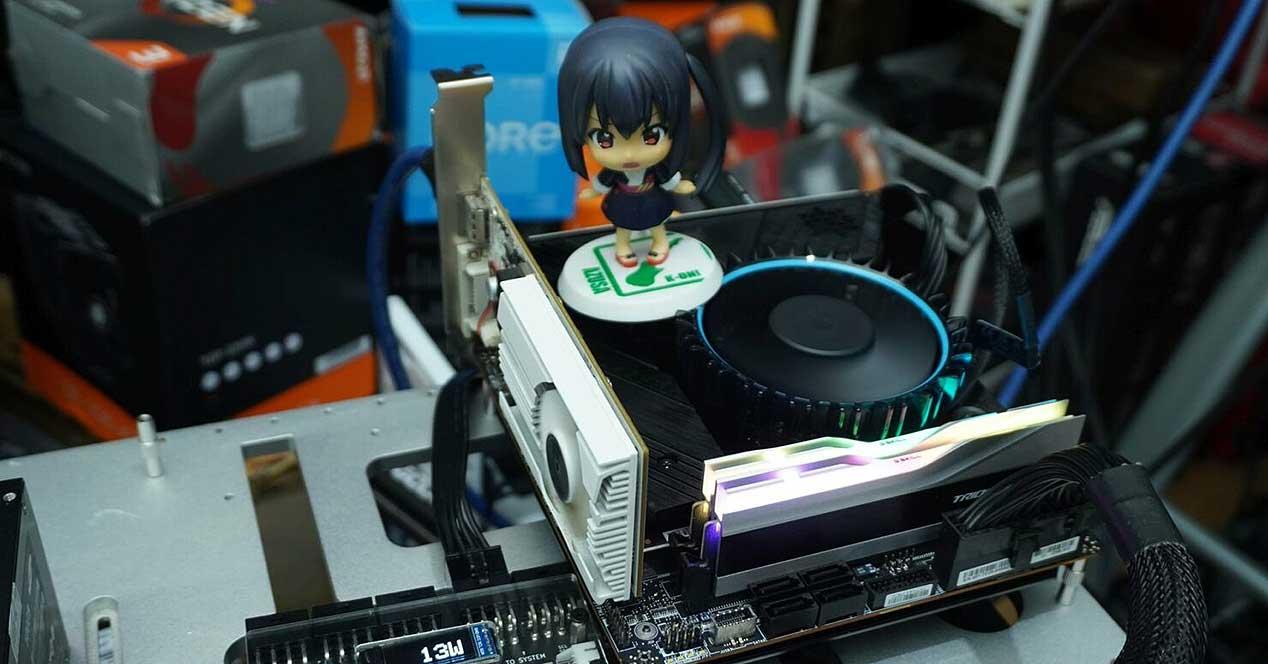The internationally renowned overclocker “der8auer” roman Hartung it’s back in the news. The German engineer posted a video on his YouTube channel showing how a processor can be overclocked Intel non-K wearing a i5 12400 processor up to a frequency of 5.2 GHz.
Overclocking, processors and ASUS: a good combination
In the video posted by the overclocker himself on his YouTube channel, which has more than 400,000 subscribers, Roman explains how this is a hidden option for motherboards. ROG MAXIMUS Z690 APEX provides the ability to bypass the BLCK lock, thus being able to OC a processor that has the frequencies blocked by multiplier.
If anything is known in the hardware industry, it’s the K processors from Intel. These CPUs have the particularity that their frequencies are unlocked, thus offering the possibility of performing OC on them. Normally these are usually high-end processors, although if you want to save a few dollars in your shopping cart you can always opt for non-K ranges, since these ranges do indeed have the particularity that their frequencies are blocked, therefore not allowing to download them. manually (at least in theory, that’s why they are marketed at a lower price)
As the youtuber explains, this feature of the motherboard of the ASUS Z690 chipset may have gone unnoticed by the media and analysts, since the card detects whether or not the processor is “unlockable” and if it is acts a CPU no K displays these options on the BIOS/UEFI. Therefore, as this type of high-end cards such as ROG Z690 with K-class processors are commonly analyzed and tested, the option is hidden and that is why it can be understood why such a good option incorporated by the brand did not sweat.
BLCK Overclocking Results at Alder Lake
There is a really fun game it’s called the silicon lottery and although you might not know it, every time you buy a processor or a graphics card you’re playing this game. Basically it’s is all about whether you had more or less luck with the quality of the chip depending on where it was on the wafer, the center, or the sides. Having that clear as an important starting point when it comes to OC, let’s see these results from the German overclocker’s video.
The truth is that these results are surprising no matter where you look. Those Alder Lake no K they offered more than decent overclocking. With a little overvoltage (1370 V) and with a Clock at 5240 MHz, its temperatures are not really remarkable, in this situation noted by the overclocker, what is remarkable is undoubtedly the result, since it realizes no less than 8 FPS more than the top-end i9-12900K. But let’s remember that it was possible thanks to the option ‘Unlock BCLK OC’ that ASUS brings to its motherboard, where it allows us to hit frequencies on locked non-K Intel processors.
Unlock BCLK OC on other motherboards
There is another approach in the video, where the possibility of enabling the ‘Unlock BCLK OC’ option on other ASUS motherboards and even on other brands was tested, a priori only giving the option on ASUS ROG MAXIMUS motherboards Z690
With the “Unlock BCLK OC” BIOS feature, ASUS allows base clock overclocking with non-K Alder Lake SKUs. This is possible thanks to an external clock generator on some boards and independent multis for memory and cache. Intel will certainly put a stop to this soon. pic.twitter.com/C3dTgvZXks
—Andreas Schilling (@aschiling) January 16, 2022
Through the comment on the channel, a few hours after the publication of the video, der8auer himself comments that he has located two other models B660 which should technically support the ability to use non-K processors in OC. We will have to be attentive and above all to see what decision Intel will take in the face of this, whether it will give free rein to motherboard manufacturers to use this option in blocked processors or as expected -unfortunately- Intel will call on manufacturers to block new overclocked UEFIs by BCLK to Alder Lake.









